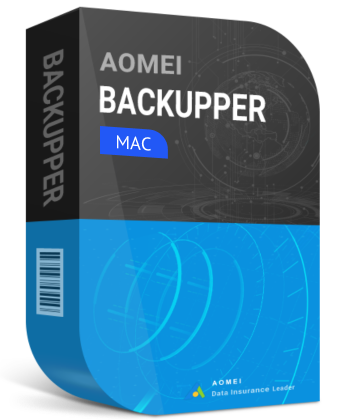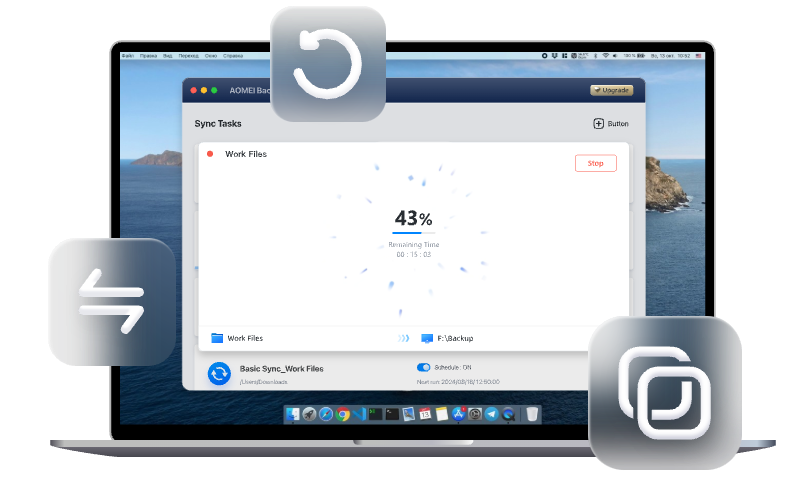iCloud Files Not Syncing on Mac: Troubleshooting Guide
Frustrated at the iCloud files not syncing on Mac issue? Cheer up and follow this guide to get it fixed. You can also get the best free Mac file sync software here.
User case: iCloud files not syncing on Mac
“iCloud files between my iPad and iPhone and the iCloud service sync just fine. File syncing to my Macbook sync automatically only some of the time. About 80% of the time I go to access a file from my Macbook, I have to force-quit the "bird" process (iCloud sync daemon), which then relaunches and suddenly files start appearing on the Macbook.
Short of creating a cron job that periodically kills the "bird" process, does anyone have a real fix for this problem? I'm running MacOS 12.6.1 on the Macbook.”
👉 Basic troubleshooting steps for iCloud not syncing on Mac
👉 Advanced solutions to iCloud files not syncing on Mac
👉 Recommend: Best free file sync software for Mac🔥
Basic troubleshooting steps for iCloud not syncing on Mac
If you find iCloud drive not syncing on Mac, do the following things before you dive into extensive troubleshooting.
👉Check Internet connection
A stable internet connection is crucial for iCloud syncing. First, check your network stability:
- Wi-Fi Signal: Ensure you’re connected to a strong Wi-Fi signal. Weak signals can interrupt syncing.
- Network Speed: Test your internet speed. Slow speeds can delay or prevent syncing. Use online tools like Speedtest to check your speed.
- Router Restart: Restart your router by unplugging it for 30 seconds and then plugging it back in. This can resolve connectivity issues.
👉Restart Mac
Often, a simple restart can fix many syncing issues. Click the Apple menu, select Restart, and wait for your Mac to reboot.
👉Sign out and sign back into iCloud
Re-authenticating your iCloud account can resolve syncing problems sometimes:
- Sign Out: Go to System Preferences > Apple ID > Overview, then click Sign Out.
- Sign In: After signing out, sign back in using your Apple ID and password. Ensure you enable iCloud Drive during the process.
Advanced solutions to iCloud files not syncing on Mac
If you still cannot see the iCloud files on your Mac, there are 4 advanced solutions for your reference.
Solution 1: Check the Date and Time
If you've recently traveled to a different time zone, causing your Mac's date and time settings to change, you might encounter issues like iCloud files not syncing. You can check whether your date and timings are correct as follows:
1. Open System Preferences > Date & Time.
2. Under the Date & Time tab, check that details are correct.
3. To make a change, press the lock icon in the bottom left.
4. Under the Time Zone tab, ensure you have checked Set time zone automatically using current location to stop this from happening again.
Solution 2: Manage Mac storage space
Lack of storage space is another factor that causes the iCloud not syncing on Mac issue. Here’s how to check it:
1. Click on the Apple menu and select About This Mac.
2. Go to the Storage tab to see a breakdown of how your storage is being used. If you’re running low, press Manage.
3. Use available options to free up storage on your Mac.
- Store in iCloud: Quickly store files (Documents, Photos and Messages) from your Mac in iCloud. Enabling this option will allow your Mac to automatically save space when it’s needed. However, you may need to purchase more storage space if you have a large number of files.
- Optimize Storage: For those who download and watch lots of movies and TV, this option can save you a lot of space and time. Enabling this option will allow your Mac to automatically remove the items you have already watched.
- Empty Trash Automatically: This option will remove items in your Trash after 30 days of them being there. Be aware that once files have been removed from your Trash, you will not be able to retrieve them.
Solution 3: Update your Mac
System flaws might also be the reason for iCloud syncing problems. Check for updates, then install them. Here’s how:
1. Open System Preferences > Software Update.
2. When you open Software Update, it automatically begins checking for new software.
- If new software is available for your Mac, click the Update Now or Upgrade Now button.
- If new software is not available for your Mac, Software Update says that your Mac is up to date.
Note: An update is a newer version of the currently installed macOS while an upgrade is a major new version of macOS with a new name.
Solution 4: Start up in safe mode
Safe mode can help you to determine whether the iCloud files not syncing issue is caused by software that loads as your Mac starts up. Follow the steps below:
1. Shut down your Mac.
2. Press and hold the power button on your Mac. As you continue to hold the power button, your Mac turns on and loads startup options. When you see Options, release the power button.
3. Select your startup disk. It's named Macintosh HD, unless you changed its name.
4. Press and hold the Shift key, then click the Continue in Safe Mode button below your startup disk.
5. Log in to your Mac. You might be asked to log in again.
6. Check if the iCloud Drive not syncing issue still exists.
👉 If the issue doesn't continue in safe mode
Leave safe mode by restarting your Mac normally, then try to reproduce the issue.
- If the issue doesn't return, it might have been resolved by using safe mode.
- If the issue returns, it is caused by a login item or other software that safe mode prevents from loading at startup. In that case, remove login items to find out whether a login item is at fault.
👉 If the issue continues in safe mode
The easiest and most likely solution is to reinstall macOS. Reinstalling macOS doesn't remove your personal files, so you can do it whenever you need to.
Note: These steps apply to a Mac with Apple silicon. If you're using an Intel-based Mac, follow the steps on this page to start up in safe mode.
Recommend: Best free file sync software for Mac
You never know when errors will occur on your Mac. Thus, it’s necessary to make a backup for your crucial data. The best free Mac sync software - AOMEI Backupper Mac can give you a hand. It enables you to sync files/folders from one location to another, which is an effective backup strategy.

-
It is embedded with three sync types: Basic Sync, Mirror Sync and Two-Way Sync, catering to your different needs.
-
You are able to sync Mac files and folders to a local disk, USB flash drive, network location and NAS device, etc.
-
To keep files up-to-date in the sync destination, you can run automatic folder sync on Mac with the Schedule feature.
-
It is easy to use and supports macOS 10.15 or later.
Don’t hesitate to download AOMEI Backupper Mac and try it out! To sync Mac folders using AOMEI Backupper, click New Task in the main interface. Then, choose sync type > select sync source/destination. Finally, click Sync to run the task.
Summary
By following the basic troubleshooting steps and advanced solutions offered on this page, you can get the iCloud files not syncing on Mac issue fixed. To ensure your data security on Mac, it is suggested to copy your important files to different locations with the best file copy software for Mac – AOMEI Backupper. It stands out for its comprehensive features and ease of use. Just explore it by yourself!

